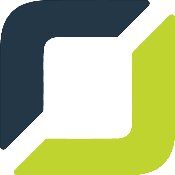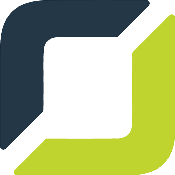Application migration is the process of transferring software applications from one computing environment to another. This concept can mean many things, such as moving an on-premises server to a cloud environment or from a public cloud to a private cloud. Applications are designed to run on particular operating systems within specific network architectures; for this reason, moving an application to a new environment can pose certain challenges.
Developing a solid application migration strategy can result in a successful move of software applications, even under strict compliance, security and cost restraints. Learn more about application migration, what it entails and the three stages of an application migration plan.
Common Application Migration Strategies
Businesses use a variety of strategies to migrate software applications to the cloud. There is no one right choice, instead, a company should select a strategy based on their unique requirements, budget restrictions and similar factors. Some of the most common application migration strategies include:
Migrate Without Conversions
Companies can enjoy significant savings when they move a primary asset from an on-premises environment to the public cloud. The public cloud also provides support through features and functionalities including on-demand capacity extension and disaster recovery.
SaaS Replacement
Businesses sometimes encounter existing Software-as-a-Service (SaaS) solutions on the marketplace that meet their needs. Choosing a SaaS replacement can eliminate the burden of the application migration process.
PaaS Replacement
Some companies may choose to adopt an existing Platform-as-a-Service (PaaS) solution without altering existing architecture. A PaaS replacement can replace costly on-premise server requirements without the need for a subscription-based service.
Re-Architect/Retire
Businesses may choose to modernize their application via cloud migration. When applications are given improved functionality, they can recover their value. When workloads fail to provide business value and are not intrinsic to other workloads, consider retiring them.
Stages Of An Application Migration Plan
 The three main stages in an application migration plan include:
The three main stages in an application migration plan include:
- The first stage involves identifying and assessing all applications. Categorize features in the original computing system based on strategic and business value. Consider data importance, business impact, complexity and capacity to meet business requirements as well as other factors. This initial step can help businesses better understand the complexity of their application migration.
- Determine the cost of ownership. Establish a budget after taking into account all possible scenarios that could arise during the application migration. Consider aspects such as operation, purchasing and maintenance fees for each scenario in order to develop a comprehensive overview. Also, include the expense of testing and training employees to use the new software if applicable.
- The final step involves developing a project plan. Evaluate the risks associated with the application migration and create a project plan based on previous calculations and research. Also, establish a timeline for completing the migration.
Application Migration Strategy Best Practices
Businesses have the goal of migrating their application smoothly with little to no downtime or disruptions. However, without the proper strategy and precautions, problems can arise during the migration that leads to bugs and costly downtime. Consider following these application migration best practices for a successful migration:
Planning
Planning is a critical step in application migration that helps ensure all configurations and resources have been accounted for. Include all servers, storage requirements, configurations, databases and users that require access to the application in the migration plan. Take note of any interconnectivity between the migrated application and resources. The migration process requires the proper settings in order to maintain communication between old and new environments.
Testing
Testing is an essential component of application migration used to identify potential bugs or errors before cutover to the production environment. It is not necessary to migrate all application data during testing, but instead, test a small subset of data with configurations and files. Once the test migration is complete, document any problems or bugs discovered so that they can be resolved before the final migration. The goal is to achieve a smooth transition from one environment to another with minimal downtime and complications.
Cybersecurity
Do not make the mistake of waiting until after the application migration has been completed to consider security. Cybersecurity should be a top priority for organizations concerned about data safety and compliance. Ideally, organizations should have their setup reviewed by an experienced security expert to check for security flaws and misconfigurations before going live.
Monitoring
Once the migration is complete, continue to monitor the application. If bugs are discovered, resolve the issue quickly. Ongoing monitoring can help identify performance issues and bottleneck problems caused by failed resources or buggy codes. Monitoring can also help minimize downtime and measure success by comparing performance statistics from the old environment with the new one.
Risks Of Application Migration
 There is always a risk that application migration could cause disruptions to normal business operations, or result in unexpected costs. Some of the most common risks associated with application migration include the following:
There is always a risk that application migration could cause disruptions to normal business operations, or result in unexpected costs. Some of the most common risks associated with application migration include the following:
- Technical Issues — Unexpected technical problems can cause an application migration to be more costly or time-consuming than first anticipated.
- Downtime — Significant changes to an application can cause problems that lead to periods of unscheduled downtime. The application itself, along with dependent or connected systems, can experience downtime resulting in unanticipated costs.
- Unplanned Expenses — Poor planning can cause businesses to encounter fees that were not originally budgeted for, such as training costs or licensing fees.
- Change Management — Applications are used differently by various organizations. In some cases, these differences can cause problems that slow down the application migration process.
The Six R’s Of Application Migration
The six R’s refer to strategies used in application migration. Before choosing a migration strategy for an organization, consider which of the six R’s are most suitable for the business:
1. Rehosting
Also called “lift and shift,” this strategy is one of the quickest ways to migrate as it uses a variety of automation tools. Rehosting involves multiple testing sessions to ensure that automation is completed properly. This strategy is most often used with legacy systems.
2. Refactoring
Similar to rehosting, refactoring is typically used when an application requires code changes to work properly in a new environment. These changes can range from minor code changes to massive refactoring efforts.
3. Revision
This application migration strategy also requires code changes but also implements infrastructure changes to the migration. Much more effort is required for a revision as changes need to be tested.
4. Rebuild
Applications cannot always be successfully migrated. This can occur when revisions are too extensive, or when rebuilding would be a more feasible option. Rebuilding a large business application can take years to complete; therefore, this strategy is only chosen when an organization has no other viable option.
5. Replace
When none of the previously mentioned strategies can be used, a business may choose to purchase an out-of-the-box solution that best meets the business requirements. However, replacing an application with a fresh solution still requires the migration of data.
6. Retain
Some businesses may discover that application migration is not the right choice for their organization. When this happens, the company may choose to retain the current application temporarily until another solution can be found.
Benefits Of Migrating To The Cloud
 Many companies are hesitant to make the move to the cloud. Application migration can be a daunting process that can disrupt an organization’s normal workflow and present new risks. However, there are also many benefits of migrating a business application to the cloud.
Many companies are hesitant to make the move to the cloud. Application migration can be a daunting process that can disrupt an organization’s normal workflow and present new risks. However, there are also many benefits of migrating a business application to the cloud.
1. Cost Savings
Public cloud platforms such as Microsoft Azure and Amazon Web Services are typically less expensive to operate than on-premise applications, resulting in cost savings. Businesses that choose to migrate to the cloud are not required to purchase or maintain costly equipment or extra systems. Companies only pay for what they use and generally require a lower storage capacity.
2. Advanced Security
On-premise applications present certain security risks. When data is stored on a computer or other device, there is a chance that it could be stolen or compromised if the device is stolen or hacked. The data can also be lost if the device suffers damage. Data stored on the cloud is available from any device at any time. The cloud-managed service provider is responsible for managing security patches and updates to keep all information safe from cyber threats.
3. Greater Scalability
Before migrating to the cloud, most organizations have a solid understanding of their needs. However, as the business grows many organizations discover that they need more infrastructure. The cloud environment is suitable for growing businesses as more storage space can be added as needed. Businesses can also choose to downsize their business when appropriate.
4. Improved Collaboration
Some businesses struggle to maintain collaboration between team members, resulting in confusion and errors. Cloud applications make it easy for teams to collaborate on files and documents in real-time. There is no need to email different versions of the same document back and forth as it can be altered in the cloud and seen by others immediately.
5. Mobilization
After migrating to the cloud, employees are no longer tied to their computers. Information and documents can be accessed from any location and any device, day or night. This can be useful for clients, vendors and staff who need fast access to data but may not be able to get to the office.
Speak With A Custom Software Development Company
Successful application migration can lead to better security, increased productivity, decreased costs, reduced training for employees and the development of modernized solutions designed to meet key business goals. If you are interested in learning more about application migration or want to start planning your own migration to the cloud, schedule a consultation with the experienced Maryland custom software development experts at Orases.






